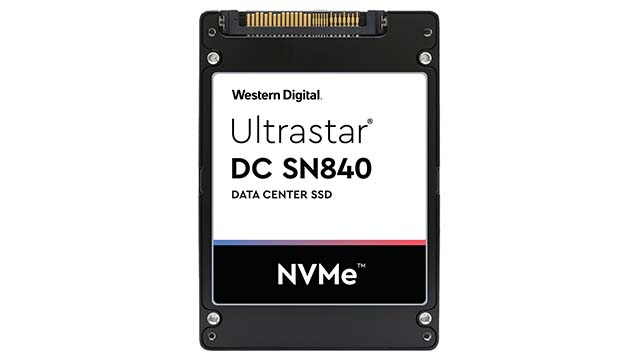While it is common knowledge that solid-state drives (SSDs) are fast storage solutions, evaluating the right size for enterprise applications can be daunting. Get the form factor wrong and it may not fit in the preferred server or storage system.
The form factor defines where the SSD fits, whether it is possible to replace it without powering down the server, and how many SSDs can be packed into a chassis for the greatest storage density. The type of SSD also determines the types of connectors needed, the power requirements and how the physical shape affects the airflow and cooling. Because there are no moving parts in SSDs, they can be found in more unique physical form factors.
Here are four of the more common form factors available that should be considered while selecting enterprise SSDs.
2.5” Drive: The most common form factor is a 2.5” drive, also known as Small Form Factor (SFF). his form factor defines the width and length of the SSD, however, there are multiple heights available.
Laptop and consumer SSDs often are 7mm in height. Enterprise SSDs can be 7mm, 9mm, or 15mm in height. Although, in the context of a server installation, the height is relatively unimportant, as most servers support any of these heights. The deeper vertical dimension or Z-height provides more volume for flash chips and controllers, potentially increasing performance, cooling, and capacity.
This form factor can support any of the SSD interfaces (SATA, SAS, and NVMe™). As the 2.5” form factor is present in many servers and JBOD front panels, these SSDs can be hot-swapped without powering down the server.
Add-In Card (AIC): Another common form factor is the Add-In Card (AIC). It is also referred to as HH-HL (half-height, half-length). Since it consists of a board that connects to a PCIe® slot inside the server chassis, only the NVMe interface is available in this form factor. Now, AIC-form-factor SSDs are not hot-swappable, as they live inside the server chassis. These may have a higher bandwidth and power profile than 2.5”-form-factor versions of the same SSD because the communications bus is wider and the power delivery capability of the PCIe slots is generally higher.
M.2: This form factor is becoming more prevalent in data center environments. This is a long, thin bare-card form factor that attaches directly to the motherboard and typically uses NVMe or SATA to communicate. Its length is variable, the common length sizes being 42, 60, 80, or 110mm. These SSDs are not hot-swappable. A common use case for M.2 drives is as a boot device where the host is mainly reading from the device.
EDSFF: A newer addition to the SSD form factor list is the “Enterprise & Data Center SSD Form Factor” (EDSFF). It is designed for improved thermals, power, and scalability. It offers integrated serviceability and hot-plug support.
There are three main variants of EDSFF: E1.S, E1.L, and E3.
- E1.S for scalable & flexible performance storage
- L high-capacity storage (e.g. QLC)
- E3 high performance SSD for 2U server / storage
Each form factor brings different advantages and the ultimate decision on which one is the right one depends on each particular design situation. Hyperscale architecture, data centers, or even client desktops and laptops each have a need for different flash solutions based on key considerations like performance, heat limits, space requirements, storage density needs and willingness to jump to new storage technologies. No matter the situation, enterprises of all sizes can benefit from the advice of experts who have been designing these drives for decades.




17 comments
buy atorvastatin 40mg sale atorvastatin 10mg canada oral atorvastatin 80mg
ciplox brand – generic tinidazole 300mg order generic erythromycin 500mg
valacyclovir 500mg us – order generic starlix 120 mg how to buy acyclovir
ivermectin side effects – aczone us sumycin order
furosemide 40mg without prescription – capoten 120mg ca buy captopril tablets
zidovudine where to buy – order avapro pills brand zyloprim 100mg
metformin pill – ciprofloxacin 1000mg cost lincomycin 500mg canada
order clozapine 50mg online cheap – quinapril 10 mg cost cost famotidine
order generic atarax 25mg – buspirone 10mg without prescription buy endep 25mg generic
order generic clomipramine – doxepin 25mg price buy doxepin pills for sale
buy cheap generic amoxicillin – buy cefadroxil 250mg for sale cipro online order
purchase ventolin generic – fexofenadine 180mg generic brand theophylline
ivermectin 3 mg without a doctor prescription – buy cefaclor without prescription cefaclor tablet
order medrol online cheap – buy claritin cheap order azelastine 10 ml
buy glyburide 2.5mg generic – dapagliflozin 10 mg sale order dapagliflozin pills
metformin 500mg pill – buy januvia purchase precose generic
order semaglutide 14 mg pills – generic semaglutide 14mg desmopressin spray